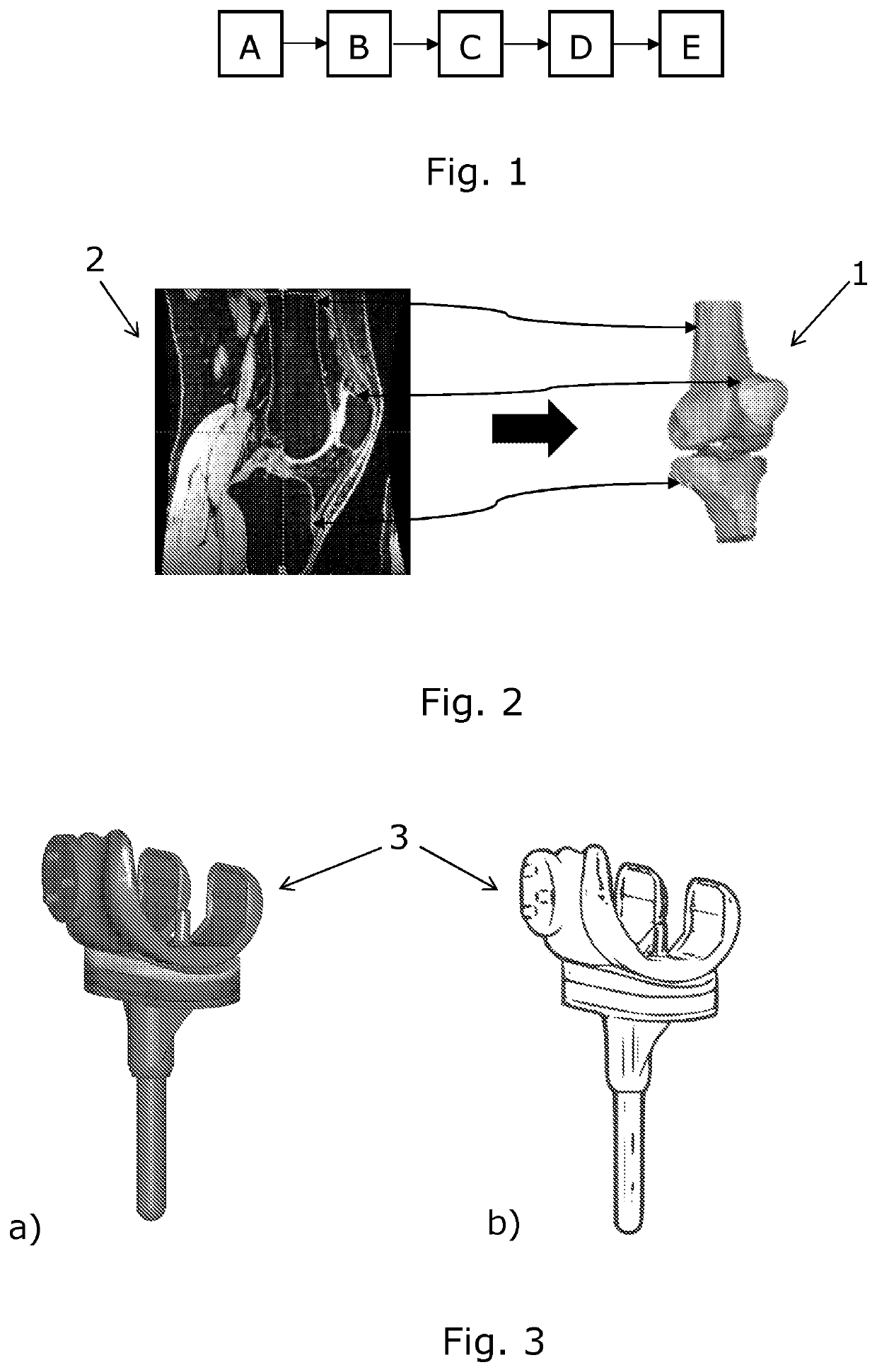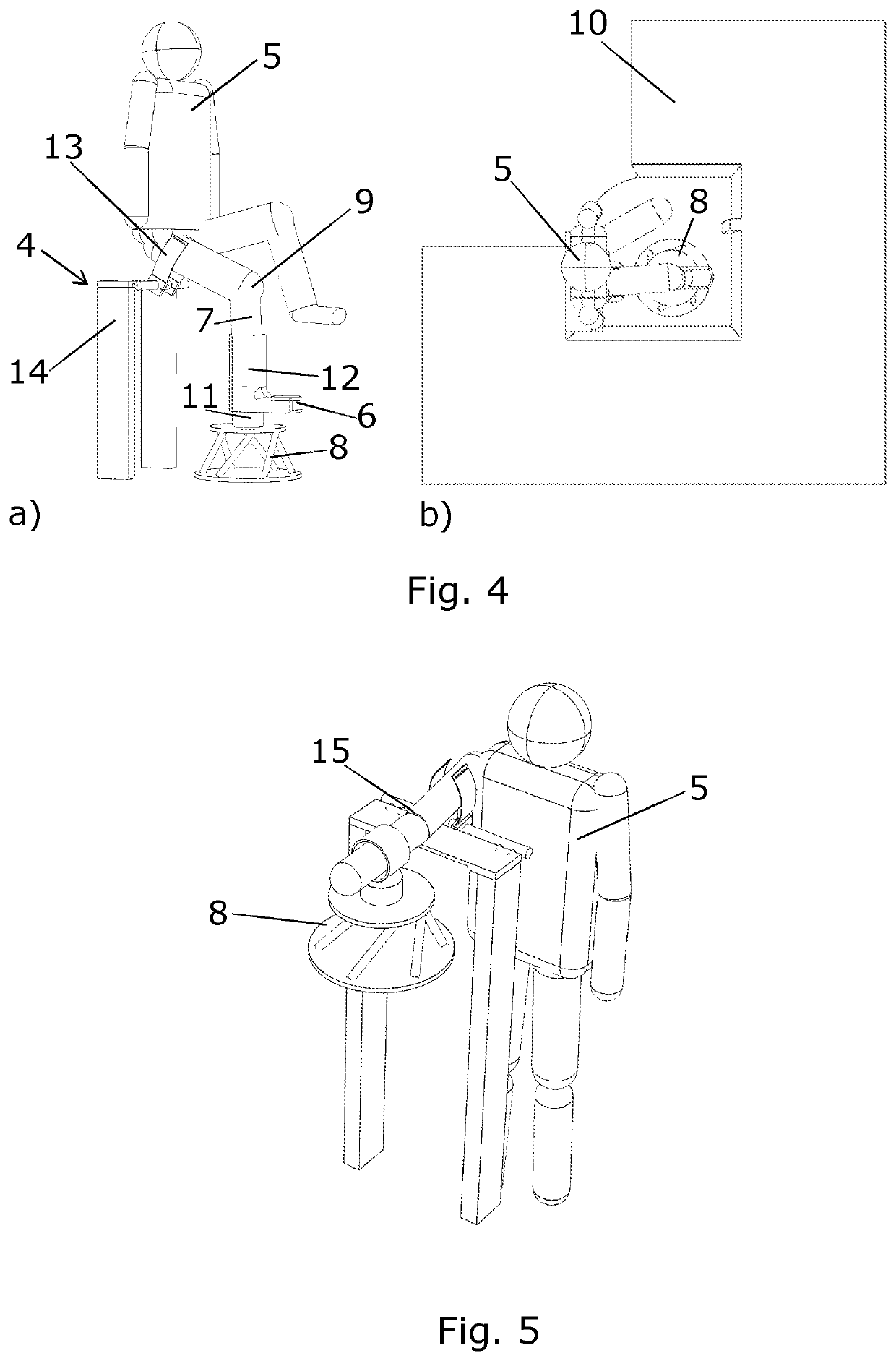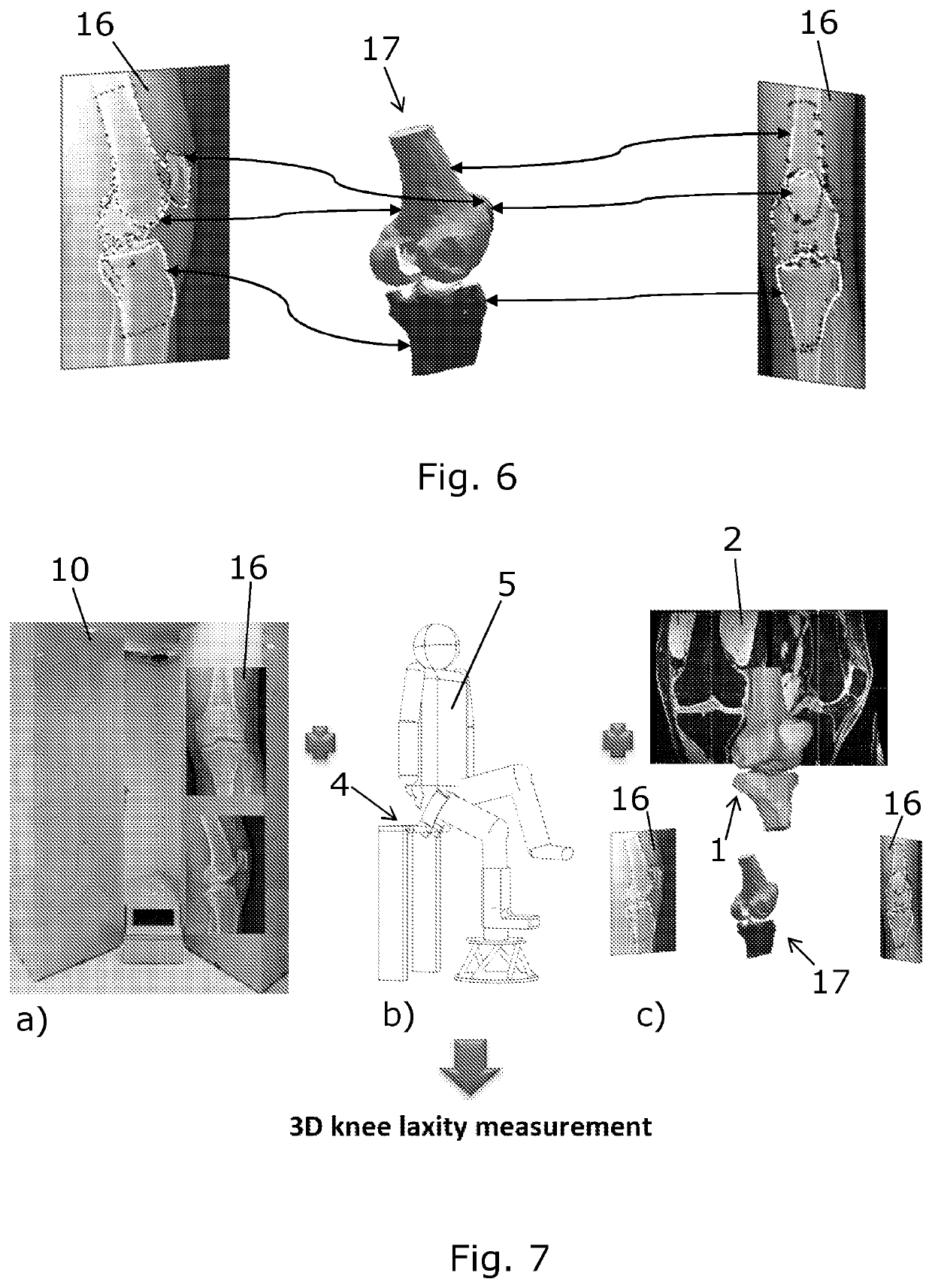Method and system for measuring the laxity of a joint of a human or an animal
- Summary
- Abstract
- Description
- Claims
- Application Information
AI Technical Summary
Benefits of technology
Problems solved by technology
Method used
Image
Examples
Embodiment Construction
[0066]FIG. 1 schematically shows a flow-chart of the method of determining the laxity of a joint of a human or an animal according to the present invention; more details of the method steps will be given in the following figures. The method comprises the following steps which will be described in details below:[0067](A) providing at least one patient-specific geometrical model of at least one bone and / or at least one prosthesis comprised by the joint,[0068](B) providing a series of actual images of the joint obtained while known loads were applied to the joint or to a part of the body connected to the joint,[0069](C) registering the at least one patient-specific geometrical model onto the actual images,[0070](D) based thereon calculate relative displacement and / or rotation of the at least one bone and / or at least one prosthesis as a function of the applied loads, and[0071](E) based on the calculated relative displacement and / or rotation determine a measure of the laxity of the joint...
PUM
 Login to View More
Login to View More Abstract
Description
Claims
Application Information
 Login to View More
Login to View More - Generate Ideas
- Intellectual Property
- Life Sciences
- Materials
- Tech Scout
- Unparalleled Data Quality
- Higher Quality Content
- 60% Fewer Hallucinations
Browse by: Latest US Patents, China's latest patents, Technical Efficacy Thesaurus, Application Domain, Technology Topic, Popular Technical Reports.
© 2025 PatSnap. All rights reserved.Legal|Privacy policy|Modern Slavery Act Transparency Statement|Sitemap|About US| Contact US: help@patsnap.com



